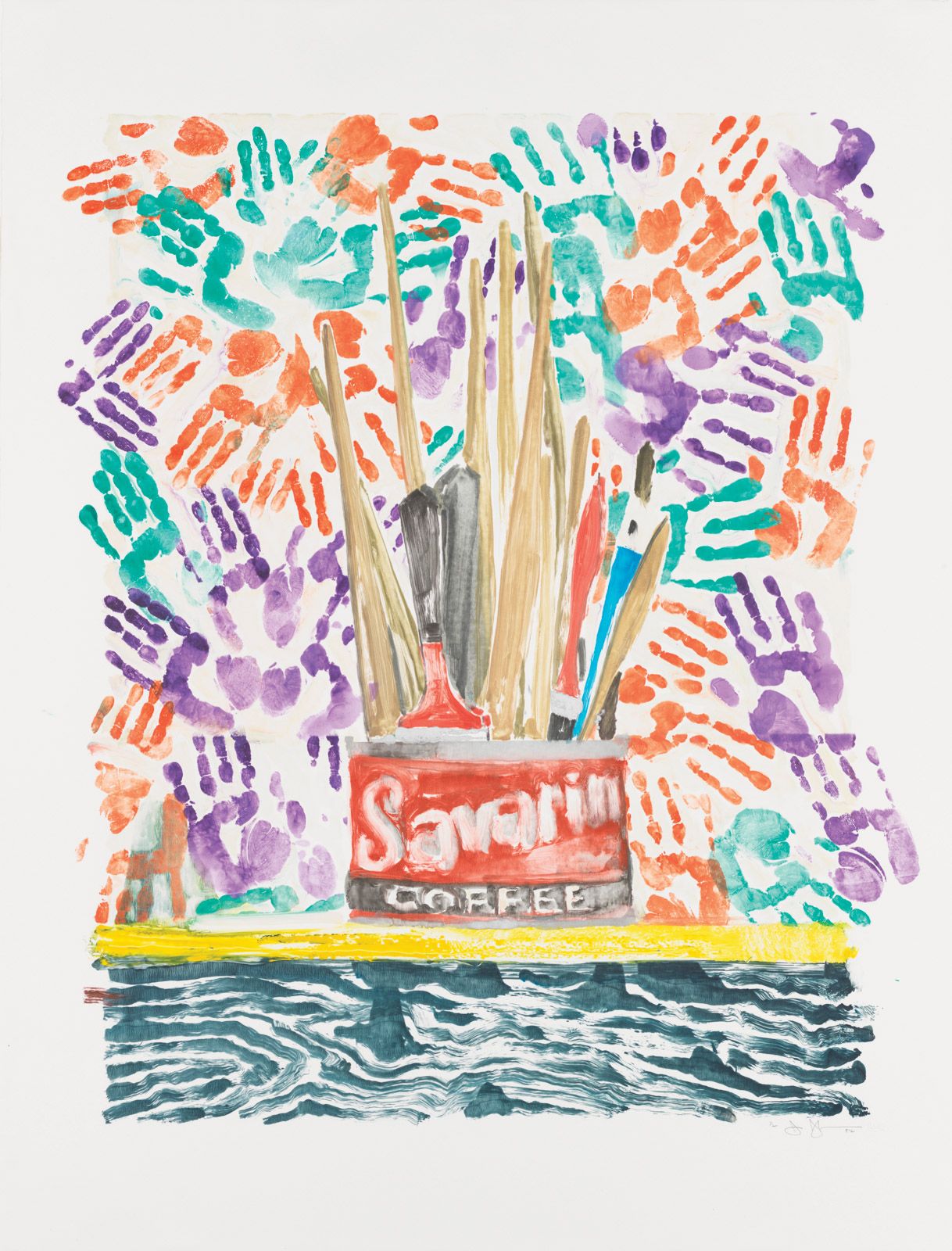
Jasper Johns is both the chameleon and the colossus of post-war American art. In a very active career, now in its seventh decade, the 91-year-old Johns has mastered an ever-changing, always-evolving series of motifs and used them in just about every medium, leading him to record auction sales for a living artist and pride of place in any serious contemporary art collection.
Often out of sorts with larger artistic trends, he veered from Pop art to abstraction, then back onto something like figurative art, revisiting earlier imagery and techniques and then recombining them in new ways. Art critics have long tried to sort out if there could be some larger meaning here, beyond the marvel of accumulation. But it is the sheer quantity of Johns’s output that will be on view as never before this autumn, when two major US museums, separated by 100 miles, join together to mount the largest overview of his work to date.

Jasper Johns: Mind/Mirror opens at New York’s Whitney Museum of American Art and the Philadelphia Museum of Art, in what amounts to one exhibition, shown simultaneously at two venues, and set to feature more than 550 works in more than half an acre of gallery space.
By some measure, Johns’s best-known work remains his 1950s US flag paintings, versions of which will be included at both museums. But the new show is rich in rare international loans and in works from the artist’s own collection, many of which have never been seen before in public.

By the late 1960s, Johns began to create multi-panelled paintings marked by a flagstone pattern and, by the early 1970s, he had begun to use a distinctive, fully abstract crosshatch motif. The crosshatch period arguably reaches a peak in Usuyuki (1982), loaned to Philadelphia by Japan’s Sezon Museum of Modern Art, and returning to the US for the first time in four decades.
Johns often revisited a still-life motif in his so-called Savarin works, featuring paint brushes in a coffee can. And there is a ghostly echo of that image in an untitled 2010 drawing from his own collection, showing a vase on a pedestal, on public view for the first time at the Whitney.
Human mortality has been Johns’s perennial obsession, and some of his most recent work uses skull imagery in broadly equivocal ways, suggesting anything from the frankly comical to subtly satanic. A five-part series of varied skeleton paintings, completed in 2019, will be shown in public for the first time in Philadelphia, on loan from the city’s own Forman Family Collection.

The exhibition is co-curated by the Whitney’s Scott Rothkopf and Philadelphia’s Carlos Basualdo. It was the latter’s idea to stage it in two places at once, according to Rothkopf. The vastness of the exhibition has given him a chance to revisit an artist he has thought about for much of his adult life, revealing Johns’s “capacity for reinvention,” Rothkopf says. “The more you explore [the works] the greater the differences seem.”
• Jasper Johns: Mind/Mirror, The Whitney Museum of American Art, New York, and the Philadelphia Museum of Art, 29 September-13 February 2022
Source link : https://www.theartnewspaper.com/preview/seeing-double-jasper-johns-in-ny-and-philly












